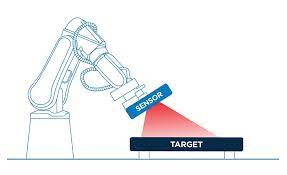The field of robotics has seen remarkable progress in recent years, thanks in large part to advancements in 3D robot vision technology. Three-dimensional vision systems have revolutionized the way robots perceive and interact with their environments, enabling them to perform complex tasks with greater precision, safety, and efficiency. In this article, we will explore the key components and applications of 3D robot vision, as well as the potential impact on industries ranging from manufacturing and healthcare to autonomous vehicles and space exploration. Alibaba.com
The Basics of 3D Robot Vision
Sensors and Perception:
3D robot vision relies on a combination of sensors and algorithms to mimic human-like perception. Depth-sensing cameras, LiDAR (Light Detection and Ranging), and structured light systems are commonly used to capture three-dimensional data. These sensors emit or detect light patterns and calculate the distance to objects based on the time it takes for the light to bounce back.
Data Processing:
Once the 3D data is collected, it undergoes complex processing to create a detailed representation of the robot's surroundings. Algorithms like SLAM (Simultaneous Localization and Mapping) are used to build maps of the environment, while object recognition and segmentation techniques identify and classify objects within the scene.
Integration with Robotics:
The processed 3D data is then integrated into the robot's control system, allowing it to make real-time decisions based on the environment. This integration enables robots to perform tasks such as object manipulation, navigation, and path planning with a high degree of autonomy and precision.
Applications of 3D Robot Vision
Manufacturing:
In the manufacturing industry, 3D robot vision has significantly enhanced quality control and automation processes. Robots equipped with 3D vision can inspect products for defects, precisely assemble components, and adapt to variations in production lines. This technology not only improves product quality but also increases production efficiency.
Healthcare:
The healthcare sector has also benefited from 3D robot vision. Surgical robots with 3D vision systems enable minimally invasive procedures with unparalleled precision. Additionally, assistive robots equipped with 3D vision can aid patients with mobility issues, enhancing their quality of life.
Autonomous Vehicles:
Autonomous vehicles, including self-driving cars, trucks, and drones, rely heavily on 3D robot vision to navigate their surroundings. LiDAR sensors and cameras help these vehicles detect and avoid obstacles, interpret traffic signals, and maintain safe distances from other vehicles. As a result, 3D vision plays a crucial role in the development of safer and more efficient transportation systems.
Agriculture:
Precision agriculture benefits from 3D robot vision by enabling drones and robotic equipment to assess crop health, monitor soil conditions, and apply fertilizers or pesticides with precision. This technology enhances yield and resource efficiency in the agricultural sector.
Space Exploration:
In space exploration, robots equipped with 3D vision are used for tasks such as planetary exploration, asteroid mining, and satellite servicing. These robots can navigate challenging terrains and perform delicate operations in the harsh conditions of outer space.
Challenges and Future Developments
Data Processing Speed:
Despite significant advancements, 3D robot vision systems still face challenges related to processing speed. Real-time decision-making requires rapid data processing, and further improvements in hardware and algorithms are needed to meet this demand.
Robustness in Unstructured Environments:
While 3D vision systems excel in controlled environments, they can struggle in unstructured or dynamic settings. Developing algorithms that enable robots to adapt to a wide range of conditions remains a significant research challenge.
Cost Reduction:
The cost of 3D vision sensors and systems remains a barrier to widespread adoption, especially in smaller businesses and industries. Continued research and development efforts are necessary to make this technology more affordable.
Ethical and Privacy Concerns:
The use of 3D robot vision raises ethical questions related to privacy and surveillance. As these systems become more prevalent, it is essential to establish guidelines and regulations to address these concerns.
Integration with AI:
The integration of 3D robot vision with artificial intelligence (AI) is a promising avenue for future development. AI can help robots better understand and interpret their environments, enabling more sophisticated decision-making and problem-solving capabilities.
Conclusion
3D robot vision is at the forefront of technological innovation, transforming industries and paving the way for a future where robots can perform tasks with unprecedented precision and autonomy. As hardware and software continue to advance, we can expect to see even more applications of 3D robot vision in fields ranging from healthcare and manufacturing to agriculture and space exploration. However, addressing challenges related to processing speed, adaptability, cost, and ethics will be crucial to unlocking the full potential of this transformative technology. With ongoing research and development efforts, the future of robotics looks brighter than ever, thanks to 3D robot vision. Visit official website qviro.com

